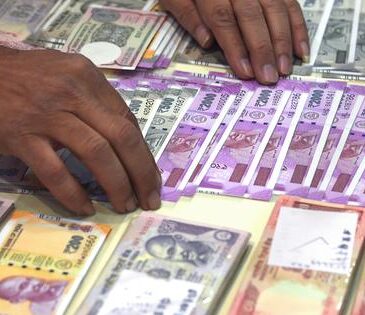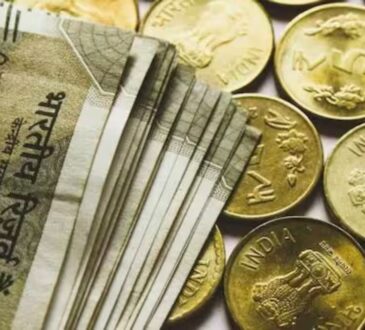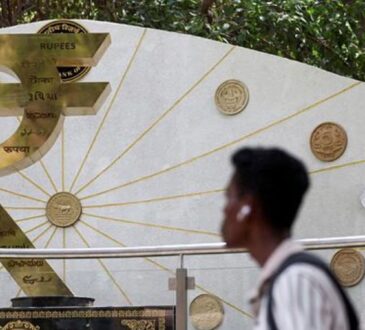NEW YORK : The U.S. dollar fell against major currencies such as the euro, and sterling on Wednesday, while the safe-haven yen tumbled, as traders awaited details of U.S. President Donald Trump’s plans for tariffs, which could reshape the global trading system.
While moves overall have been muted, risk sentiment seemed to have improved based on the price action, perhaps tracking U.S. equities.
The yen was down against a broad swath of currencies, while commodity currencies such as the Australian and New Zealand dollars as well as the Norwegian crown rose against the greenback. Commodity currencies typically rally when there is increased tolerance for risk.
The euro rose 0.6 per cent against the dollar to $1.0852, after earlier hitting a two-week high, while sterling climbed 0.4 per cent to $1.2978 ahead of a White House Rose Garden announcement scheduled for 2000 GMT that will likely see the imposition of steep new duties on U.S. imports.
Trump has for weeks trumpeted April 2 as “Liberation Day”, and White House spokeswoman Karoline Leavitt said reciprocal tariffs on countries that impose duties on U.S. goods would take effect immediately after Trump’s announcement.
“Dollar movements have remained relatively subdued leading up to Liberation Day, as the market reacts cautiously, awaiting clearer trade policies and the potential Federal Reserve response,” said Uto Shinohara, senior investment strategist, Mesirow Currency Management in Chicago.
“While the announcement may resolve some uncertainty, numerous moving parts keep the outlook uncertain – ranging from the potential responses of other nations, to (Treasury Secretary Scott) Bessent’s claim that the announced tariffs represent a peak starting point for negotiations, with sector-specific tariffs still to come.”
Against the Japanese currency, the dollar gained 0.3 per cent to 150.13 yen .
The Australian dollar was up 0.3 per cent at US$0.6296, potentially boosted by investors seeking out currencies that are less exposed to tariffs.
Details about the size and scope of the trade barriers set to come into force remain unknown, but the Washington Post reported that Trump’s aides were considering a plan that would raise duties on products by about 20 per cent from nearly every country, rather than targeting certain countries or products.
“Reports on the scale of levies this afternoon have varied wildly, which is keeping price action muted,” said Helen Given, director of trading at Monex USA in Washington.
“Simply put, no one wants to take any big bets in either direction without knowing what exactly they’re betting on. I’d expect thin flows and choppy price action until this afternoon’s announcement, which – if two months of precedent is any indication – could be more of a whimper than a bang.”
Worries about the impact of an escalating global trade war on the world’s largest economy and a slew of weaker-than-expected U.S. data have stoked recession fears and in turn undermined the dollar this year.
Given nervousness about the tariff announcement, the dollar reacted little to data showing U.S. private payrolls increased more than expected in March. Private payrolls rose by 155,000 last month after an upwardly revised 84,000 rise in February, according to the ADP National Employment Report.
There was also minimal reaction to a report indicating that factory orders rose 0.6 per cent in February, after an upwardly revised 1.8 per cent rebound in January. Economists polled by Reuters had forecast factory orders would climb 0.5 per cent after a previously reported 1.7 per cent advance in January.
The dollar, meanwhile, slid 0.3 per cent against a basket of currencies to 103.85 . That comes after the greenback dropped 3.1 per cent in March, its worst monthly performance since November 2022.
Elsewhere, the greenback was up 0.1 per cent against the Canadian dollar at C$1.4316, and rose 0.4 per cent against the Mexican peso to 20.433 pesos.
Canadian Prime Minister Mark Carney spoke with Mexican President Claudia Sheinbaum on Tuesday about Canada’s plan to “fight unjustified trade actions” by the United States, the prime minister’s office said.
Bank of Japan Governor Kazuo Ueda meanwhile said on Wednesday that planned new U.S. tariffs could have a huge impact on world trade, warning of a possible hit to global growth.
Currency
bid
prices at
2 April
06:02
p.m. GMT
Descripti RIC Last U.S. Pct YTD Pct High Low
on Close Change Bid Bid
Previous
Session
Dollar 103.83 104.2 -0.34 per cent -4.30 per cent 104.31 103.
index 68
Euro/Doll 1.0852 1.0793 0.56 per cent 4.83 per cent $1.0874 $1.0
ar 78
Dollar/Ye 150.1 149.62 0.3 per cent -4.63 per cent 150.24 149.
n 17
Euro/Yen 162.91 161.44 0.91 per cent -0.19 per cent 163.04 161.
12
Dollar/Sw 0.8828 0.8836 -0.07 per cent -2.71 per cent 0.8848 0.88
iss 16
Sterling/ 1.2971 1.2923 0.38 per cent 3.71 per cent $1.2981 $1.2
Dollar 901
Dollar/Ca 1.4319 1.4304 0.12 per cent -0.41 per cent 1.4335 1.42
nadian 89
Aussie/Do 0.6295 0.6279 0.29 per cent 1.76 per cent $0.6314 $0.6
llar 274
Euro/Swis 0.9579 0.9536 0.45 per cent 1.98 per cent 0.959 0.95
s 35
Euro/Ster 0.8364 0.8348 0.19 per cent 1.1 per cent 0.8377 0.83
ling 42
NZ 0.5734 0.5701 0.68 per cent 2.58 per cent $0.5747 0.57
Dollar/Do 03
llar
Dollar/No 10.399 10.4332 -0.33 per cent -8.51 per cent 10.4725 10.3
rway 961
Euro/Norw 11.2909 11.2929 -0.02 per cent -4.06 per cent 11.3146 11.2
ay 65
Dollar/Sw 9.9092 10.0099 -1.01 per cent -10.06 per cent 10.021 9.89
eden 59
Euro/Swed 10.7532 10.804 -0.47 per cent -6.22 per cent 10.8181 10.7
en 317




